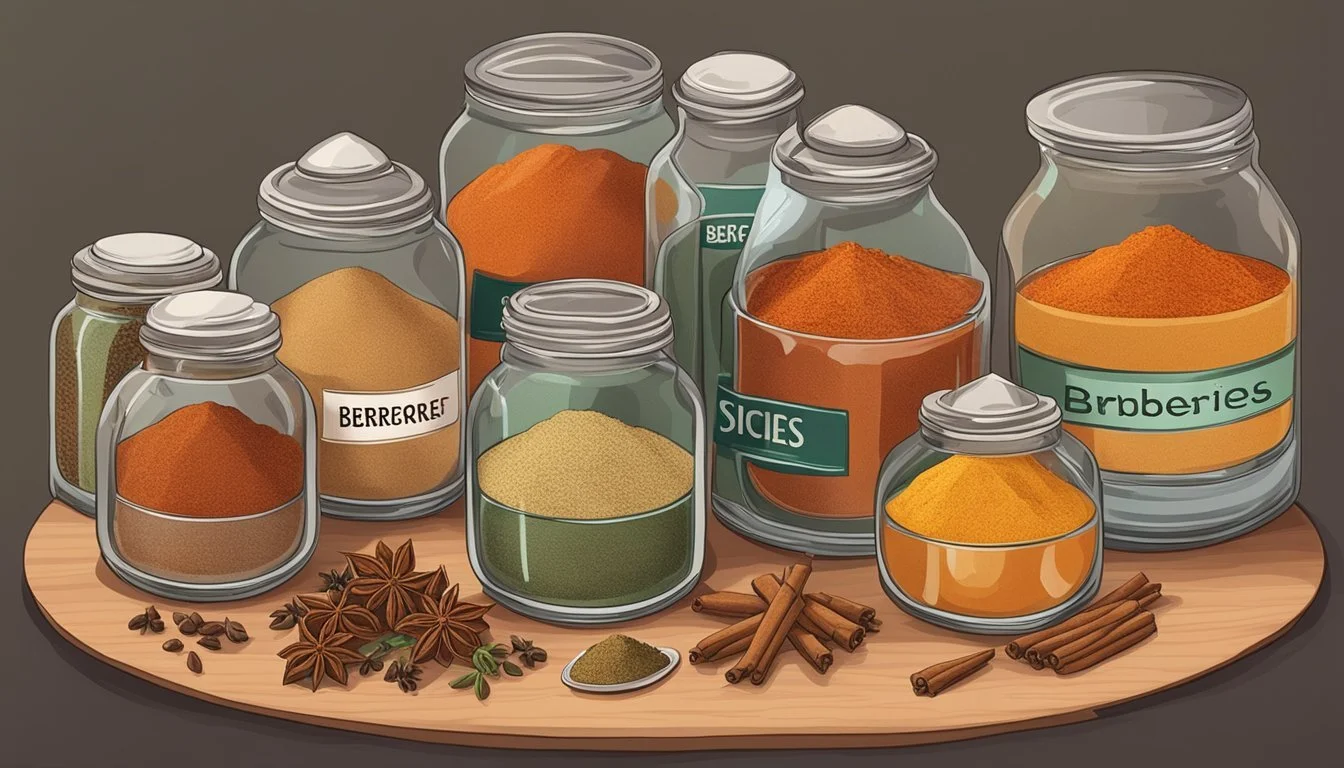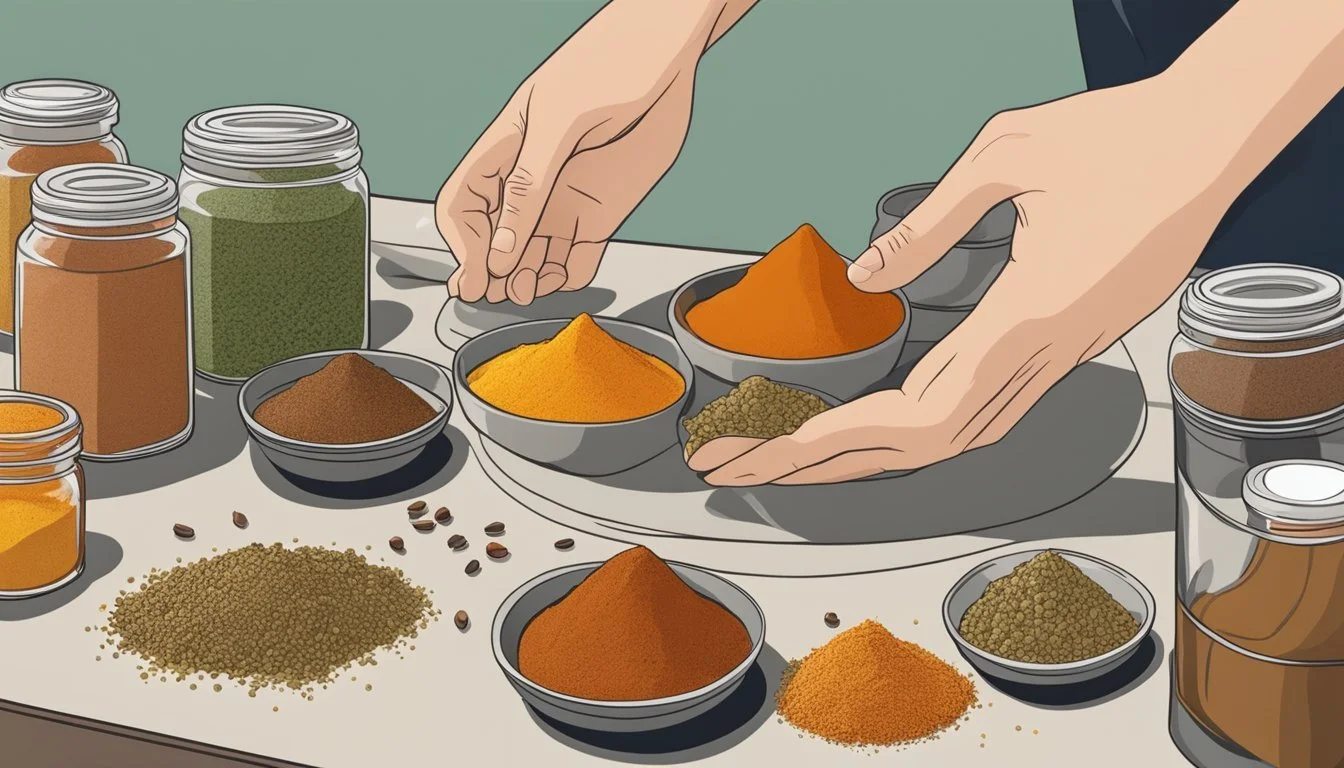Berbere Spice Substitutes
Best Alternatives for Authentic Flavor
Anyone who has dabbled in Ethiopian cuisine knows the significance of Berbere spice. This aromatic blend boasts a complex flavor profile, combining heat with a medley of exotic spices like coriander, cumin, fenugreek, and cloves. It's not just about the spice; it's about the layers of flavor that bring an authentic taste to Ethiopian dishes. Berbere spice adds depth and warmth to a variety of recipes, making it a staple for many culinary enthusiasts.
For those moments when Berbere spice isn't readily available, there are several substitutes that can replicate its bold and intricate flavors. Tandoori Masala, for instance, shares many of the same ingredients and can work as an excellent dry rub for meats and seafood. Likewise, Ras el Hanout and Baharat, both revered in Middle Eastern cuisine, can offer a similar spicy and aromatic profile.
Throughout the global spice market, blends like Harissa, Garam Masala, and even curry powder stand out as potential alternatives. Each brings its unique twist, ensuring that your dishes maintain that sought-after depth and complexity. Exploring these substitutes opens up new culinary possibilities while preserving the essence of traditional Ethiopian flavors.
Understanding Berbere Spice
Berbere spice is a vibrant and essential component of Ethiopian cuisine, offering a unique blend of flavors and aromas. This spice blend has a rich history and contains a variety of ingredients that contribute to its distinct taste and culinary applications.
Historical Significance and Origin
Berbere originates from Ethiopia and Eritrea. This spice blend has been a cornerstone of Ethiopian and Eritrean cuisine for centuries. It symbolizes the rich culinary heritage of East Africa and is traditionally used in a variety of dishes, including stews, soups, and as a meat rub.
Berbere's popularity is not confined to its region of origin. Over time, it has found its way into global kitchens, appreciated for its depth of flavor and versatility. Its historical relevance is as much about cultural identity as it is about gastronomy.
Traditional Ingredients and Uses
Berbere contains an array of ingredients that are both common and aromatic. Typical components include coriander, fenugreek, ginger, cumin, chili peppers, paprika, cinnamon, nutmeg, cardamom, cloves, and black pepper. These elements are ground together to form a vibrant, red-orange powder.
In Ethiopian cuisine, Berbere is commonly used in dishes like Doro Wat (a spicy chicken stew) and Kik Alicha (a mild split pea stew). It can also serve as a dry rub for meats and a seasoning for vegetables or lentils. The blend's versatility makes it a staple in many households.
Flavor Characteristics
The flavor profile of Berbere is complex, combining heat and spiciness with sweet and aromatic notes. The chili peppers provide a moderate to intense heat, while ingredients like cinnamon, nutmeg, and cardamom contribute warmth and subtle sweetness. Ground ginger and cumin add an earthy depth.
The aromatic spices within Berbere create a robust and multifaceted taste, making it distinctive and easily recognizable. This complexity allows it to enhance the simplicity of staple ingredients in various dishes, making it a beloved spice blend among food enthusiasts.
Common Uses of Berbere in Cooking
Berbere spice is integral to many Ethiopian and Eritrean dishes and adds a distinct, rich flavor to a variety of savory meals. It can be used as a dry rub, paste, or seasoning for a diverse range of ingredients.
Classic Ethiopian Dishes
Berbere spice is a key ingredient in traditional Ethiopian stews, or wats. One of the most well-known dishes is Doro Wat, a rich, spicy chicken stew often served during holidays and special occasions.
Beef stew, or Siga Wat, also relies heavily on Berbere to achieve its deep, bold flavor. Beyond stews, Berbere is mixed with clarified butter (called niter kibbeh) to create a versatile paste, which can then be added to various vegetable and meat dishes. This paste enriches the dish with a complex, spicy profile.
Versatility in Recipes
Berbere is not limited to traditional recipes. It works well as a dry rub for meats like chicken, beef, and seafood, enhancing their natural flavors. When used with vegetables, it transforms simple roasted vegetables into spicy and aromatic side dishes.
It can be sprinkled over popcorn for a unique snack or mixed into soups and stews to provide a robust and spicy depth. As a powder, it is excellent for seasoning lentils and chickpeas, bringing warmth and complexity to vegetarian dishes. Its versatile nature allows it to adapt to various cooking methods and ingredients, proving its necessity in both traditional and modern kitchens.
Homemade Berbere Spice Mix
Creating a homemade Berbere spice mix allows for customization to suit personal preferences and ensures freshness. Proper storage helps maintain its bold flavors and vibrant aroma.
Make Your Own Berbere Spice
To make Berbere spice mix at home, begin with the necessary ingredients. Essential components include coriander, cumin seeds, fenugreek, cinnamon, ginger, black peppercorns, nutmeg, cloves, cardamom, paprika, cayenne pepper, and allspice. Toasting the whole spices first will enhance their flavors.
Recipe:
Ingredients:
2 tbsp coriander seeds
1 tbsp cumin seeds
1 tbsp fenugreek seeds
1 tsp black peppercorns
5 cloves
2 cardamom pods
1 stick of cinnamon
1 tbsp ground ginger
2 tbsp paprika
1 tsp cayenne pepper
0.5 tsp nutmeg
1 tsp allspice
Instructions:
Toast the whole spices (coriander, cumin, fenugreek, peppercorns, cloves, cardamom, and cinnamon) in a dry skillet over medium heat until fragrant.
Grind the toasted spices into a fine powder using a spice grinder.
Mix with the remaining ground spices.
Store in an airtight container.
Storage Tips
To preserve its freshness, store the homemade Berbere spice mix in a cool, dry place, such as a pantry. Using an airtight container will prevent moisture from degrading the quality.
Consider labeling the container with the date of preparation to track its age. For maximum freshness, use the spice mix within six months. Ensure the storage area is away from direct sunlight and heat sources. This careful storage will keep the mix potent and flavorful for use in various recipes.
Berbere Spice Substitutes
For those looking to replicate the rich and complex flavor profile of Berbere spice, there are various substitutes available. These substitutes can be broken down into blends of multiple spices or single ingredient options, each offering its own unique take on the original Berbere flavor.
Substitute Blends
Ras El Hanout is a versatile Moroccan spice blend that shares many components with Berbere. It typically includes coriander, cumin, cinnamon, and cloves, making it a good alternative.
Garam Masala, an Indian spice mix, has a warm flavor profile with ingredients like cumin, coriander, nutmeg, and cardamom, similar to Berbere.
Tandoori Masala is another useful blend, particularly for meat and seafood dishes. It contains spices such as coriander, cumin, ginger, and cinnamon.
Baharat is a Middle Eastern blend featuring black pepper, coriander, cumin, and cloves, providing a comparable warmth and complexity.
Jamaican Jerk Seasoning includes allspice, thyme, and nutmeg, offering a bold flavor profile that can stand in for Berbere in various recipes.
Single Ingredient Substitutes
Curry Powder can be used in place of Berbere, though it has a more earthy and rounded heat. It's best to start with a smaller amount and adjust according to taste.
Cayenne Pepper offers the heat found in Berbere, but lacks the complex flavor. Use it in smaller quantities, supplementing with other spices as needed.
Paprika adds a mild, sweet smokiness and some color. It's a good choice for heat-sensitive dishes.
Ground Chili Pepper can provide the necessary spiciness. Adjust the quantity to taste, as it can be quite fiery.
Tsire, an African spice blend, features similar ingredients to Berbere like paprika, ginger, and garlic powder. It provides a comparable depth of flavor.
Assessing Berbere Spice Alternatives
When looking for suitable substitutes for Berbere spice, it's essential to consider both flavor compatibility and how to adjust the heat levels. This ensures the result maintains the desired balance in your dishes.
Evaluating Flavor Compatibility
Berbere spice is known for its complex blend of spices such as coriander, cumin, fenugreek, cinnamon, and cloves. Finding a substitute with a similar flavor profile can be challenging but not impossible. Tandoori Masala and Curry Powder are strong contenders as they share many of these ingredients.
Tandoori Masala includes coriander, cumin, fenugreek, ginger, and black peppercorns which offer a robust and slightly spicy flavor that mimics Berbere. On the other hand, Curry Powder offers an earthy roundness, bringing together coriander, cumin, turmeric, and cloves.
Adjusting the ratio of various ingredients can help achieve a closer match. For instance, adding a bit of nutmeg or cardamom to Curry Powder may enhance the depth. A squeeze of lemon or some grated ginger can also add a touch of complexity similar to Berbere.
Adjusting Heat Levels
Berbere spice brings significant heat with the inclusion of ingredients like ground chili peppers, cayenne pepper, and red pepper. When selecting a substitute, it's crucial to adjust the heat to match personal preferences and the requirements of the dish.
Paprika can be used to modulate the heat level without drastically changing the overall flavor. For more heat, increasing the cayenne pepper or adding a blend with chili peppers can help achieve the desired spiciness. In contrast, for those wanting less heat, incorporating more mild spices, such as coriander and cumin, can tame the intensity.
Balancing the spices with paprika or ground chili pepper gives flexibility in tweaking the heat level. It's advisable to start with smaller amounts and adjust incrementally, tasting as you go, to avoid overpowering the dish. Using black pepper can also add a different type of spiciness, providing warmth without overwhelming heat.
Creating New Culinary Experiences
Exploring substitutes for Berbere spice can introduce exciting new dimensions to your cooking. With fusion techniques and innovative pairings, you can recreate the essence of Berbere while discovering fresh flavors.
Fusion Cooking Ideas
Fusion cooking blends elements from different culinary traditions. Ras El Hanout and Garam Masala, known for their complexity, are ideal for creating unique dishes.
Incorporate these spices into Indian and North African recipes. For instance, use Garam Masala in a Moroccan tagine. Blend Ras El Hanout with Middle Eastern dishes, like shakshuka.
For a versatile option, try Tandoori Masala in Ethiopian-inspired stews. This cross-cultural approach brings new flavors while staying true to the original essence of Berbere.
Innovative Pairings
Pairing new spices with complementary ingredients can reinvent traditional dishes. Try Tsire powder in a spiced meat rub, enhancing flavors in Eritrean dishes.
Combining Jerk Seasoning with vegetables can mirror Berbere's heat and depth. Use Barahat to flavor lentil soups, adding a Middle Eastern twist.
Experiment with Curry Powder in pastas or salads. This spice, with its sweet and savory balance, mimics Berbere’s complexity. Such pairings enrich recipes with novel tastes, deepening the culinary experience.





